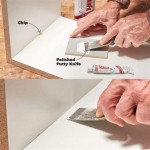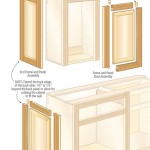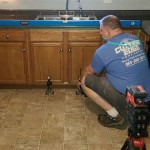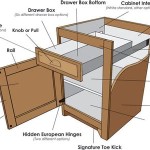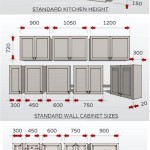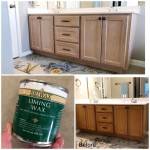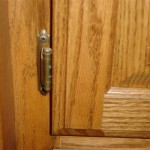How To Install Upper Kitchen Cabinets On Uneven Walls
Installing upper kitchen cabinets on uneven walls can be a challenging task, but it is achievable with the right planning and tools. Uneven walls can cause cabinets to appear out of place and create gaps, impacting the overall aesthetics and functionality of your kitchen. This article outlines the essential steps to install upper cabinets on uneven walls, ensuring a professional and aesthetically pleasing result.
1. Assessing the Wall and Planning the Installation
Before embarking on the installation process, it is crucial to assess the wall's unevenness and plan accordingly. This step involves identifying the extent of the unevenness and determining the best approach to address it.
Use a level to identify the highest and lowest points on the wall where the cabinets will be installed. Mark these points with a pencil to create a visual representation of the wall's unevenness. This will help you decide whether to level the cabinets by shim them or adjust the wall using drywall compound.
If the unevenness is minor, you can likely shim the cabinets to level them. However, if the wall is significantly uneven, you may need to address the wall's unevenness before installing the cabinets.
2. Shimming Upper Cabinets for Level Installation
Shimming is a common method for leveling cabinets on uneven walls. Shims are thin, wedge-shaped pieces of wood or plastic that are placed between the back of the cabinet and the wall to adjust the height and level the cabinet.
Start by installing the first cabinet at the desired height. Use a level to ensure the cabinet is level from side to side. Then, insert shims behind the cabinet to create a solid and even base, ensuring the cabinet sits flush against the wall.
As you install subsequent cabinets, repeat the process, using shims to level and adjust the cabinets. Remember to make sure the shims are securely in place to prevent the cabinets from shifting. Pay attention to the spacing between cabinets, ensuring they are even and consistent throughout the installation.
3. Adjusting Uneven Walls with Drywall Compound
If the wall's unevenness is substantial, using shims alone may not be sufficient to level the cabinets. In such cases, you may need to address the unevenness by applying drywall compound to create a more even surface for the cabinets to sit on.
Start by using a putty knife to apply a thin layer of drywall compound over the uneven areas of the wall. Make sure the compound is smooth and even. Then, use a level to ensure the compound is level with the rest of the wall.
Allow the drywall compound to dry completely before installing the cabinets. Once dry, you can sand the compound to create a smooth surface, ensuring a seamless finish for the cabinets.
4. Installing the Upper Cabinets
Once the wall has been prepared and the cabinets are level, you can begin installing the cabinets. Start by screwing the cabinets to the wall studs. If you are mounting the cabinets on drywall, use wall anchors to ensure the cabinets are securely in place.
When attaching the cabinets to the wall, ensure you are using the correct screws and techniques. Use a drill with a pilot bit to create holes for the screws, preventing the wood from splitting. Drive the screws in at an angle for added stability and strength.
After installing the first cabinet, use a level to ensure it is level from side to side and top to bottom. Then, install the remaining cabinets, ensuring they are level and aligned with the first cabinet. Make sure you are using the correct spacing between cabinets.
5. Finishing Touches: Caulking and Trim
After installing the cabinets, you can apply a thin bead of caulk along the edges of the cabinets to seal any gaps and create a clean, finished look. Let the caulk dry completely before painting or staining.
You can add trim around the cabinets to create a more finished look and hide any imperfections. Installing crown molding or trim can enhance the overall aesthetic of your kitchen.
Installing upper cabinets on uneven walls can be a challenging task, but with the right planning and tools, you can achieve a professional and aesthetically pleasing result. By addressing the wall's unevenness, leveling the cabinets, and using proper installation techniques, you can create a functional and stunning kitchen. Remember to take your time, be patient, and pay close attention to detail to ensure a successful installation.

How To Work On Curb Or Crooked Walls When Installing Kitchen Cabinets

Fitting Cabinets To Bowed Walls

Scribing Cabinets To An Uneven Wall

Fitting Kitchen Units On Uneven Walls Has Never Been Easier

Here S How Install New Upper Kitchen Cabinets

Cabinet Installation Plumb And Level Edgewood Cabinetry

How To Install Upper Cabinets A Diy Guide

How To Install Kitchen Wall Cabinets Lowe S

How Can I Conseal A Wall Kitchen Cabinet That S Uneven On The Top

Wall Of Cabinets Installed Plus How To Install Upper By Yourself Addicted 2 Decorating
Related Posts

